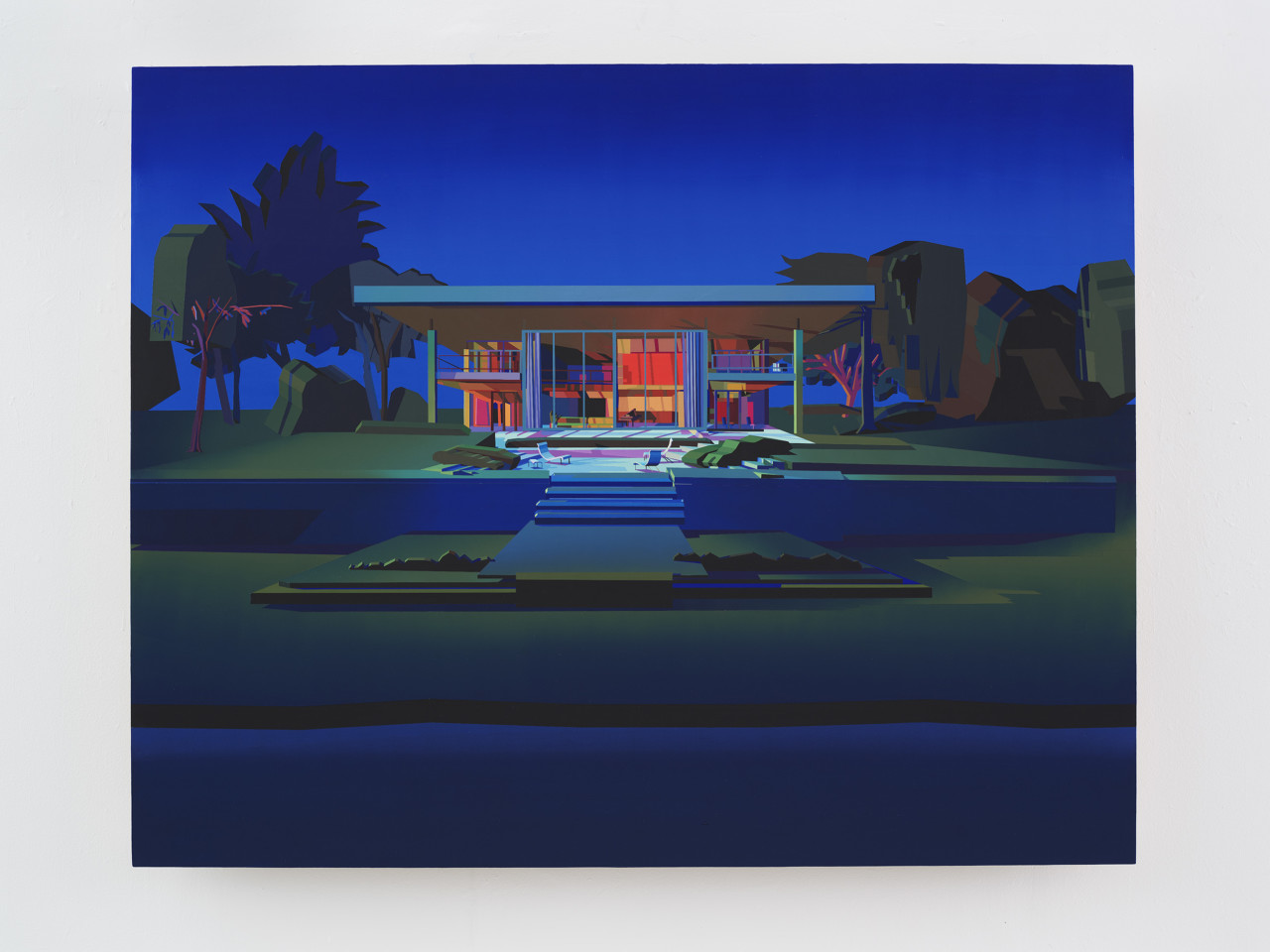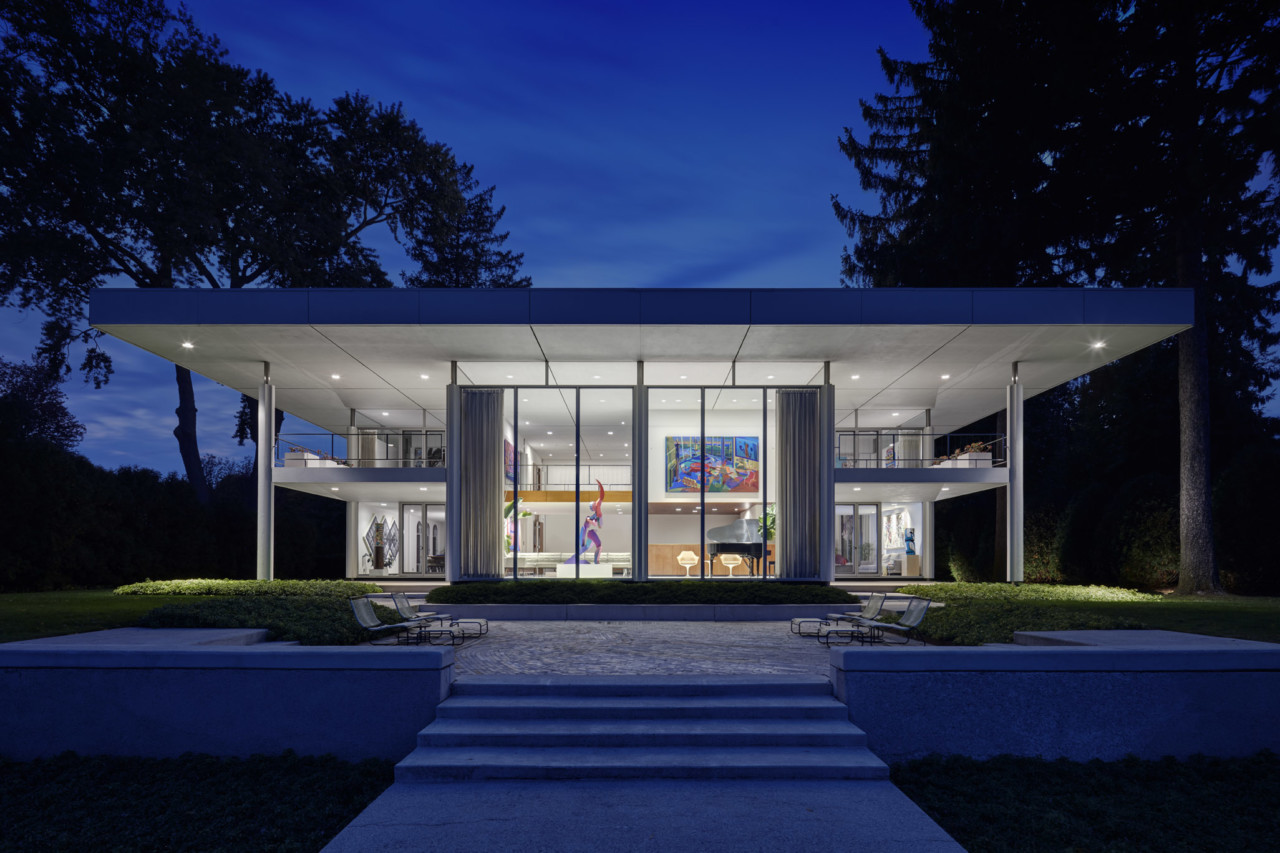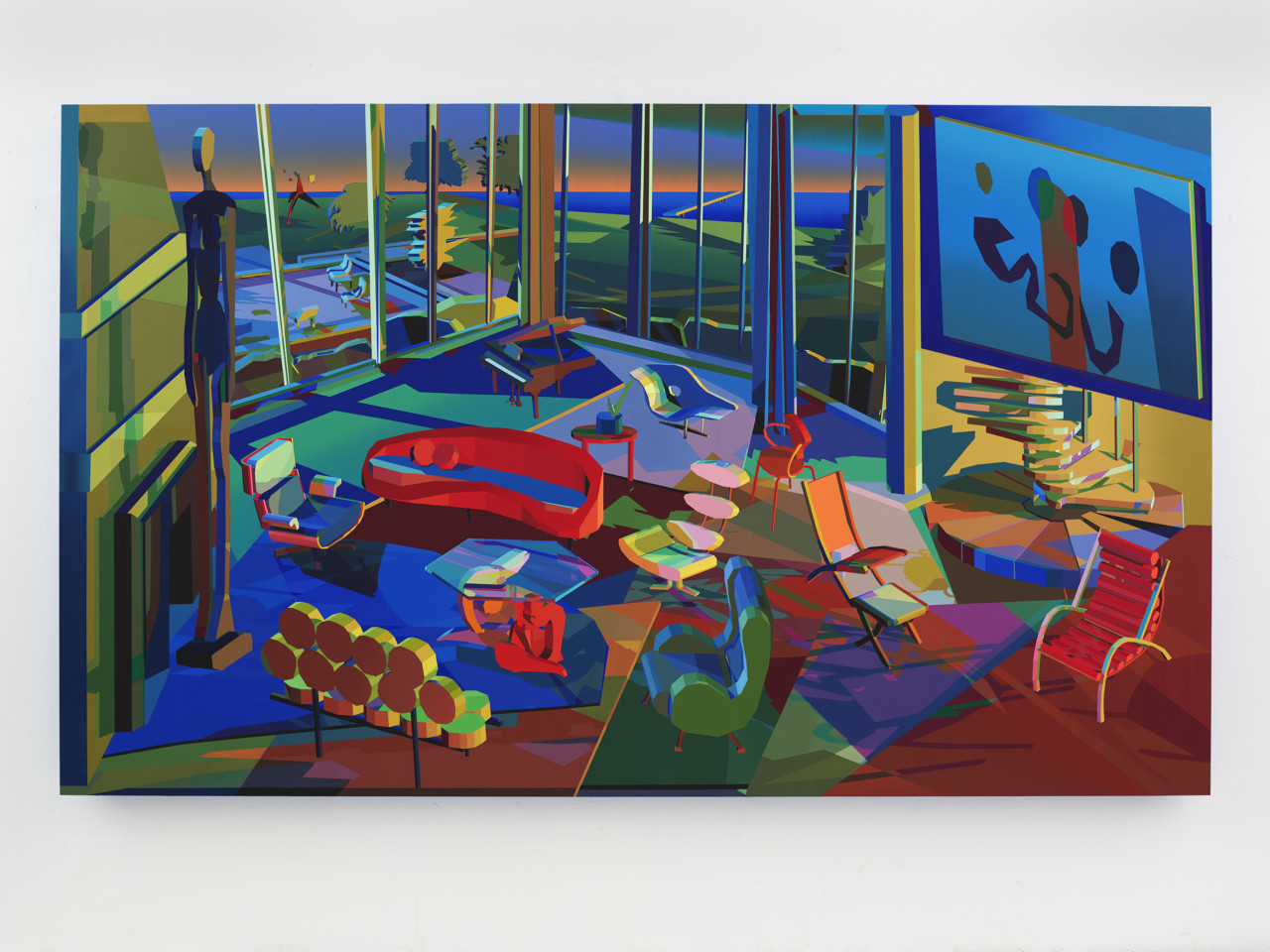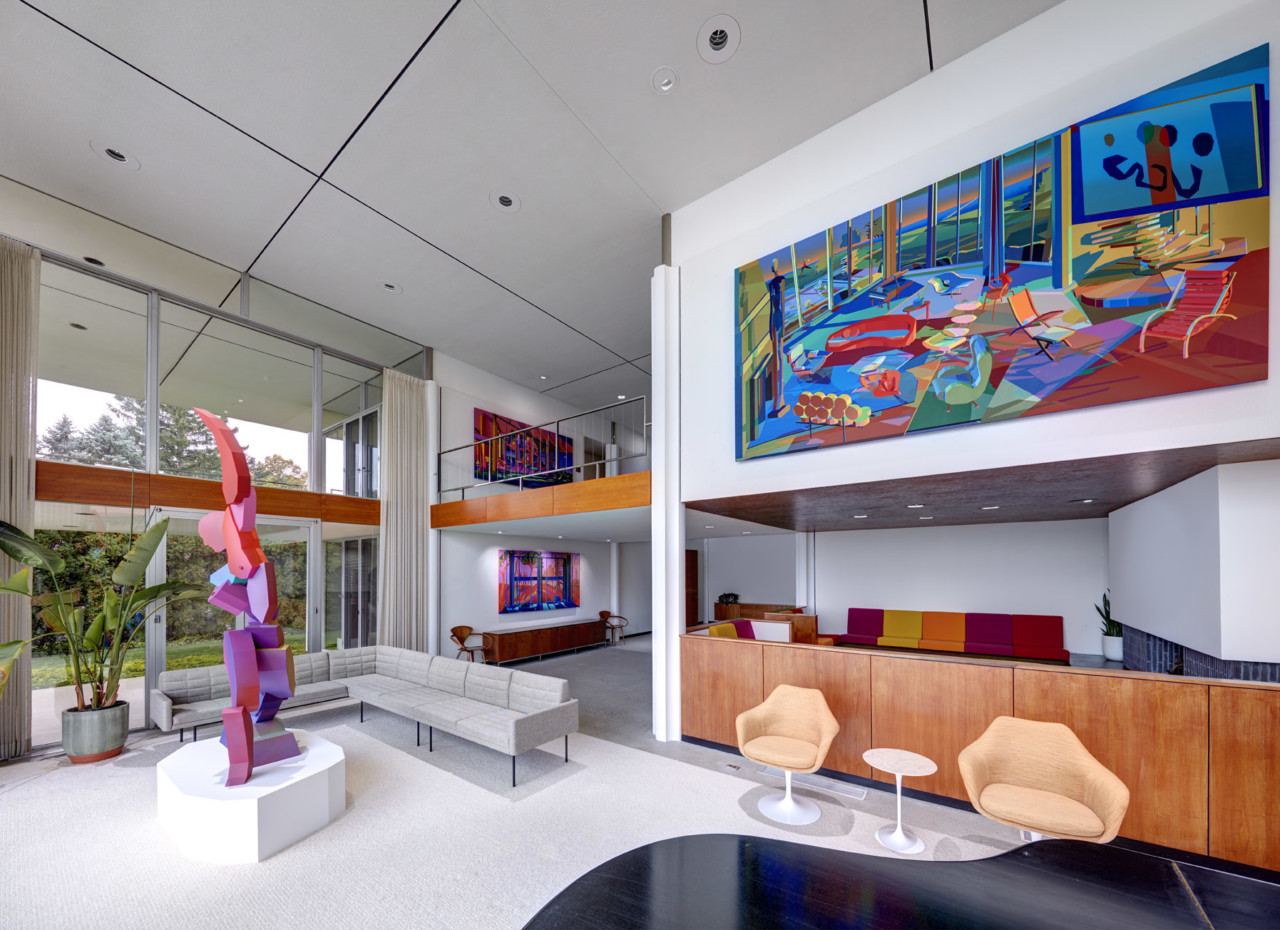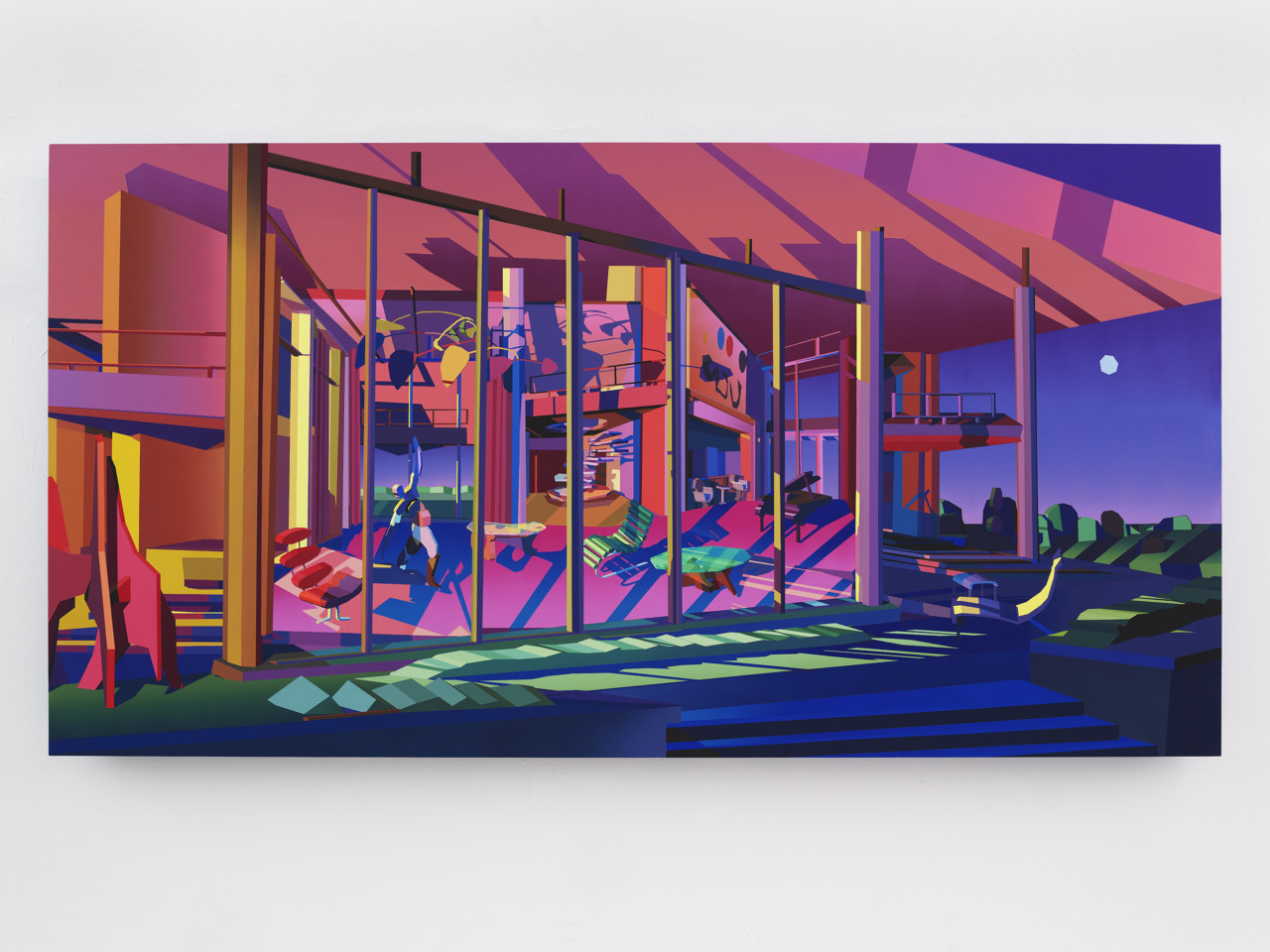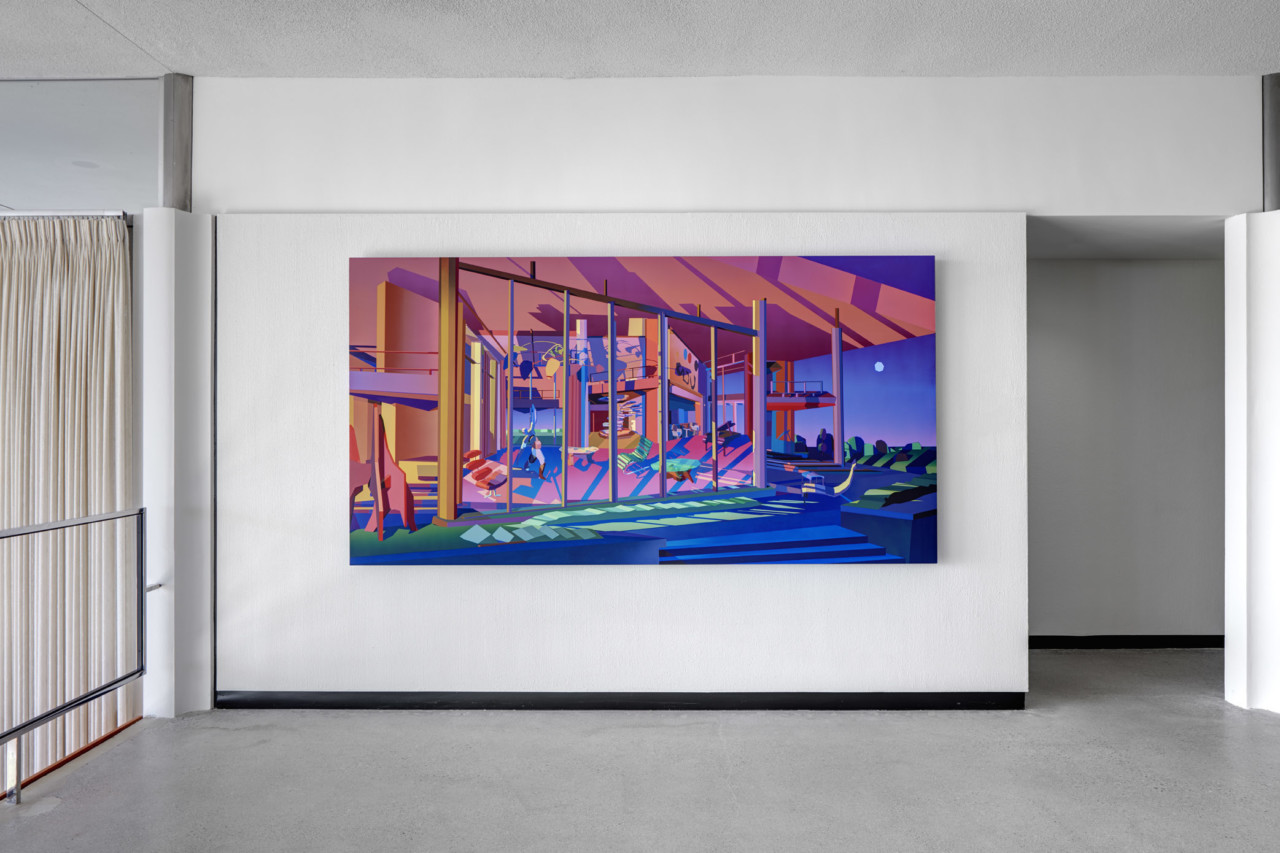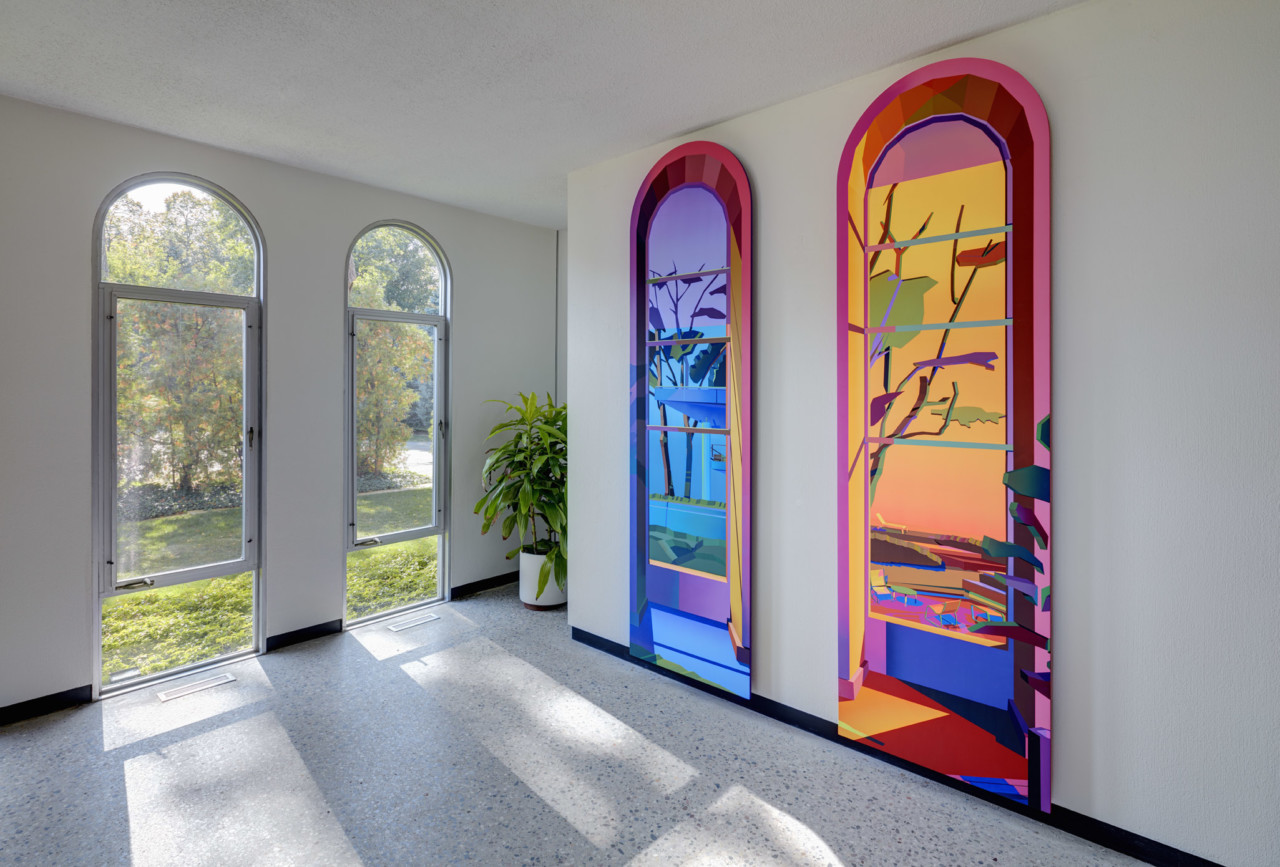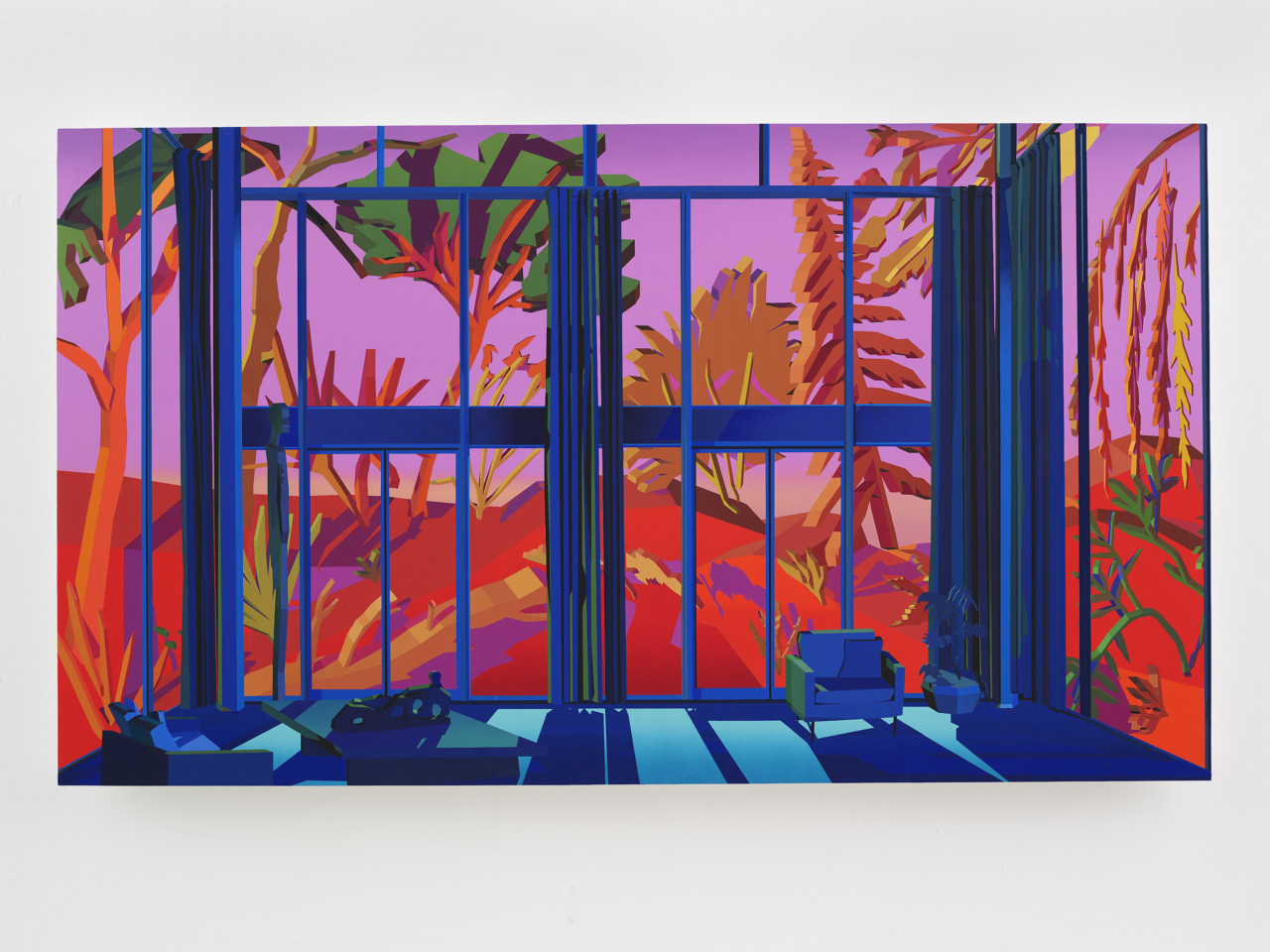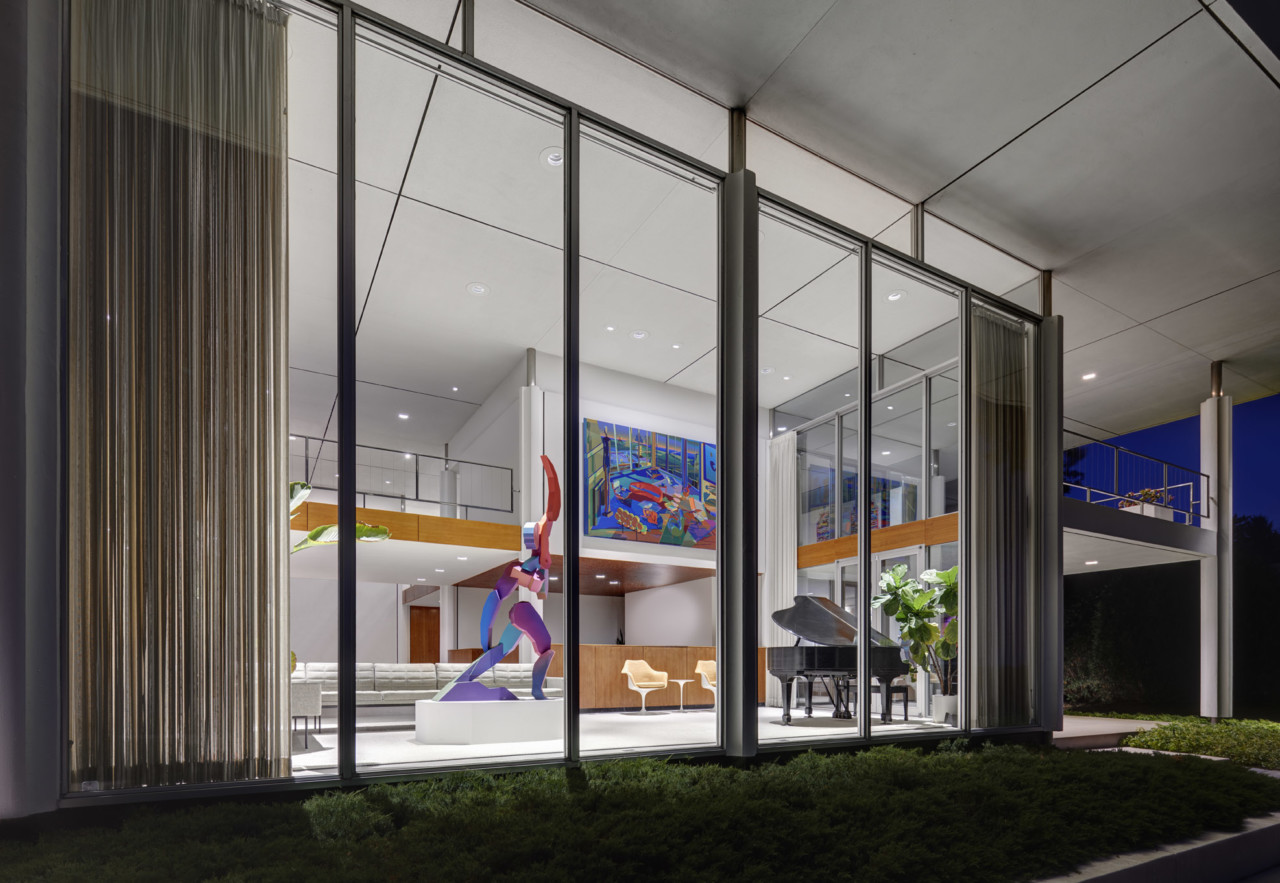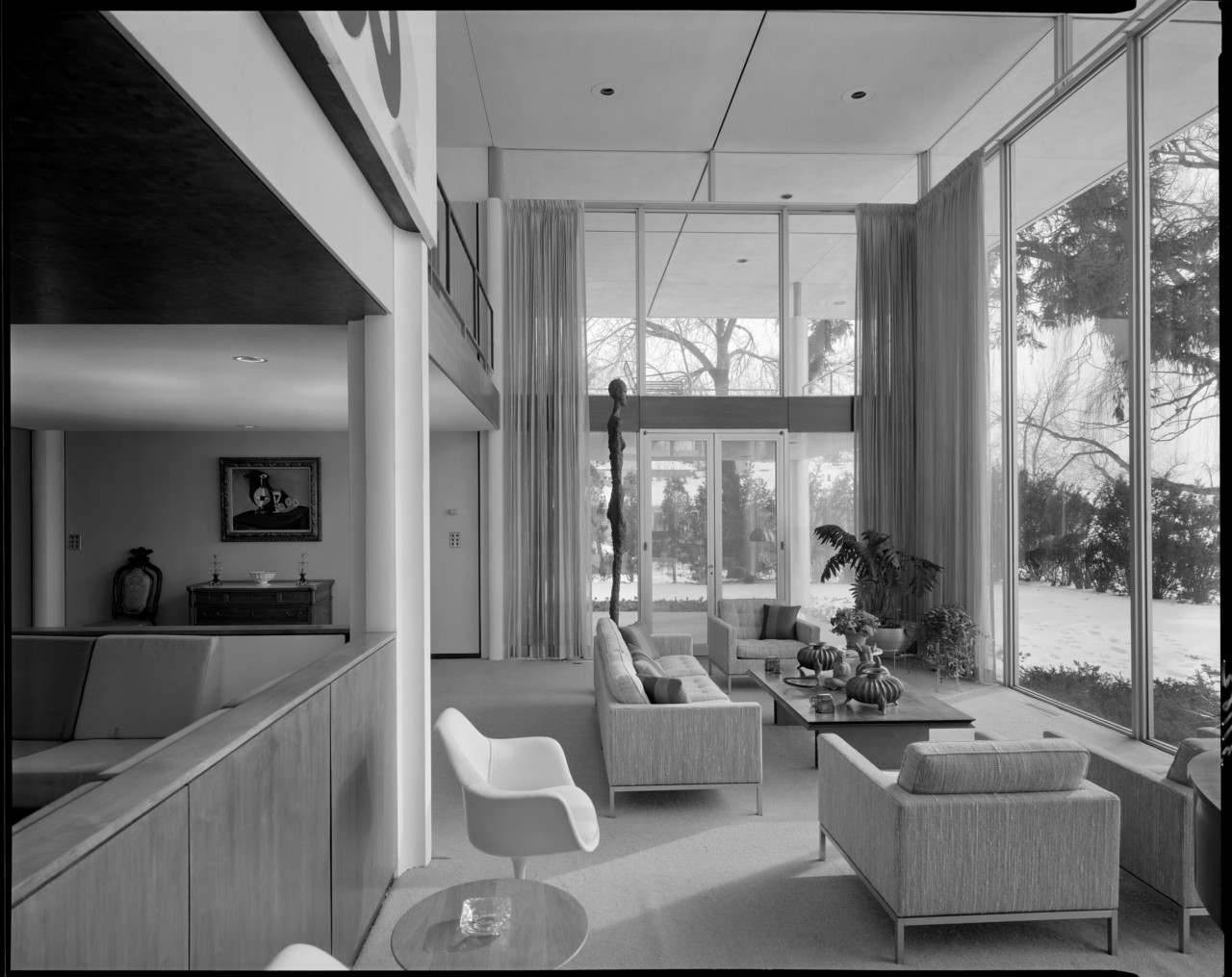Facing directly out onto Lake St. Clair in Grosse Pointe Shores, Michigan, the former home of the late, Detroit-born art collector, philanthropist, architectural historian, and posthumous LGBTQ icon W. Hawkins Ferry has certainly not gone without attention and admiration since it was completed in 1964.
Designed by William Kessler, a Midwestern architect who cut his teeth at Yamasaki & Associates and, like Ferry, studied at the Harvard Graduate School of Design, the soaring, flat-roofed modernist home with floor-to-ceiling windows and precast concrete columns served as a vehicle for Ferry to display his sizable collection of modern art and early mid-century furnishings. Over the years, Ferry’s home-cum-private gallery was photographed for spreads appearing in House Beautiful and other publications and has also been featured in more recent, historic preservation-minded profiles. Now, an online exhibition presented by Detroit gallery Library Street Collective is quite literally painting the National Register of Historic Places-listed Hawkins Ferry House in an entirely new light.
Titled Virtual Window, the new virtual exhibition from artist Jonathan Chapline depicts the interior and exterior spaces of the Hawkins Ferry House in the Brooklyn-based artist’s signature color-drenched, slightly surrealist style and is installed within it. (The home is currently owned by JJ and Anthony Curis, founding partners of the Library Street Collective, who painstakingly restored the home after it had fallen into neglect and disrepair in the years following Ferry’s death in 1988.)
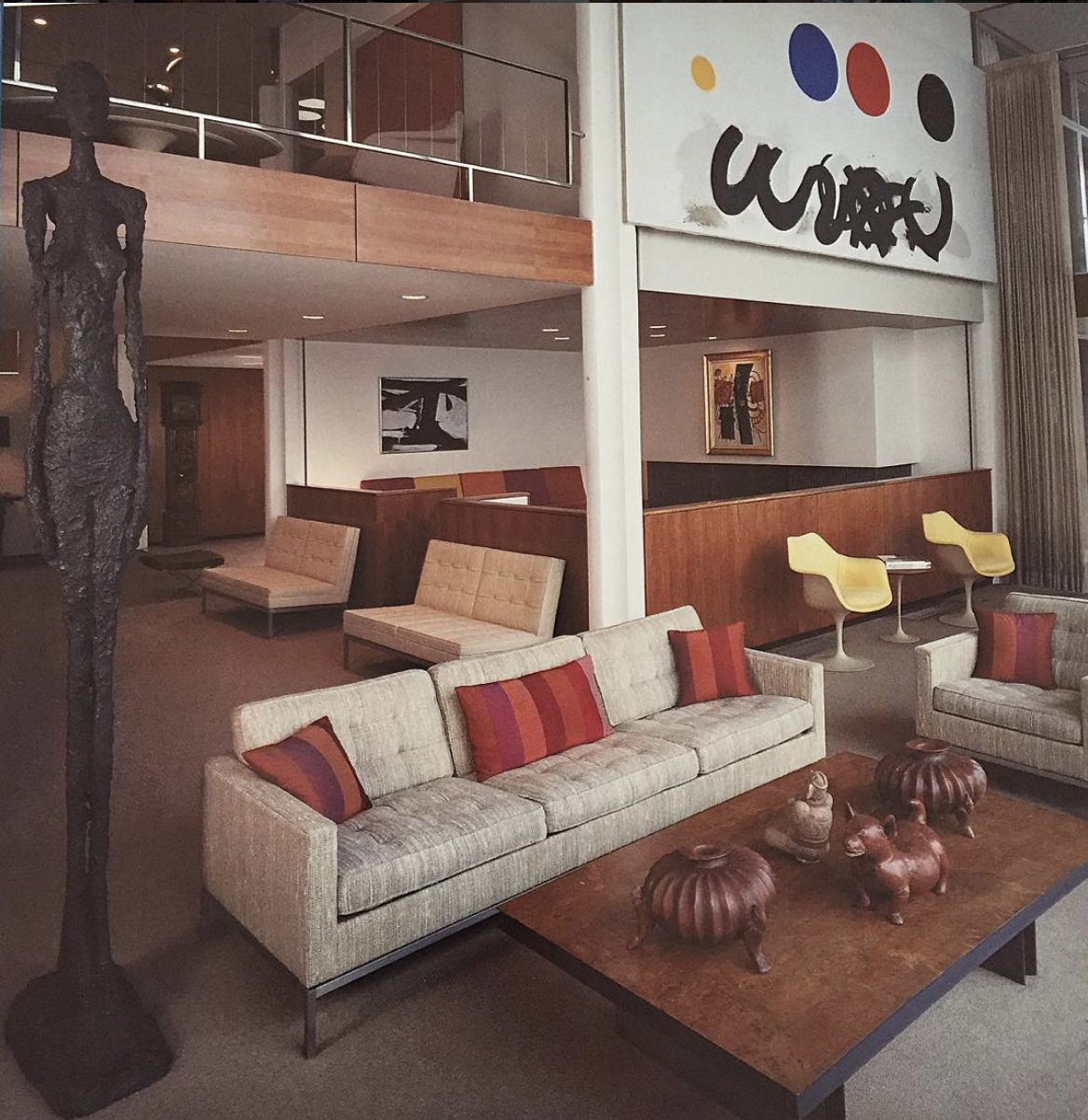
In his work, which includes both oil-based painting and sculpture, Chapline normally relies on memory and source materials like home decor catalogs and archival photography to create newly imagined domestic spaces. First conceived as digital collages on Photoshop, the vibrant 2D interior worlds envisioned by Chapline are then translated into oil paintings. Virtual Windows, however, takes a different approach as this was the first time that Chapline, a graduate of the Rhode Island School of Design, has depicted a realized space—a historic and rather well-documented one, at that—and not a digitally-assembled amalgamation of his own creation.
“In my own practice, I create new spaces out of memories and source material, cutting it up into Photoshop collages using preliminary drawings, breaking space apart and putting it back together again into new spaces,” Chapline elaborated to AN. “This project was different because I was drawing off of an actual realized space. Unlike in the past, I was rebuilding something that was already there and one that I’ve never visited in-person. Through historical images and blueprints and present-day images, I started creating my own version of the house using a 3D program. The imagery draws from working from home in quarantine creating these large spaces from image references and sketches. There was a certain amount of call and response. Looking at the space, rebuilding it, ‘living’ in this digital house, and reproducing the image.”
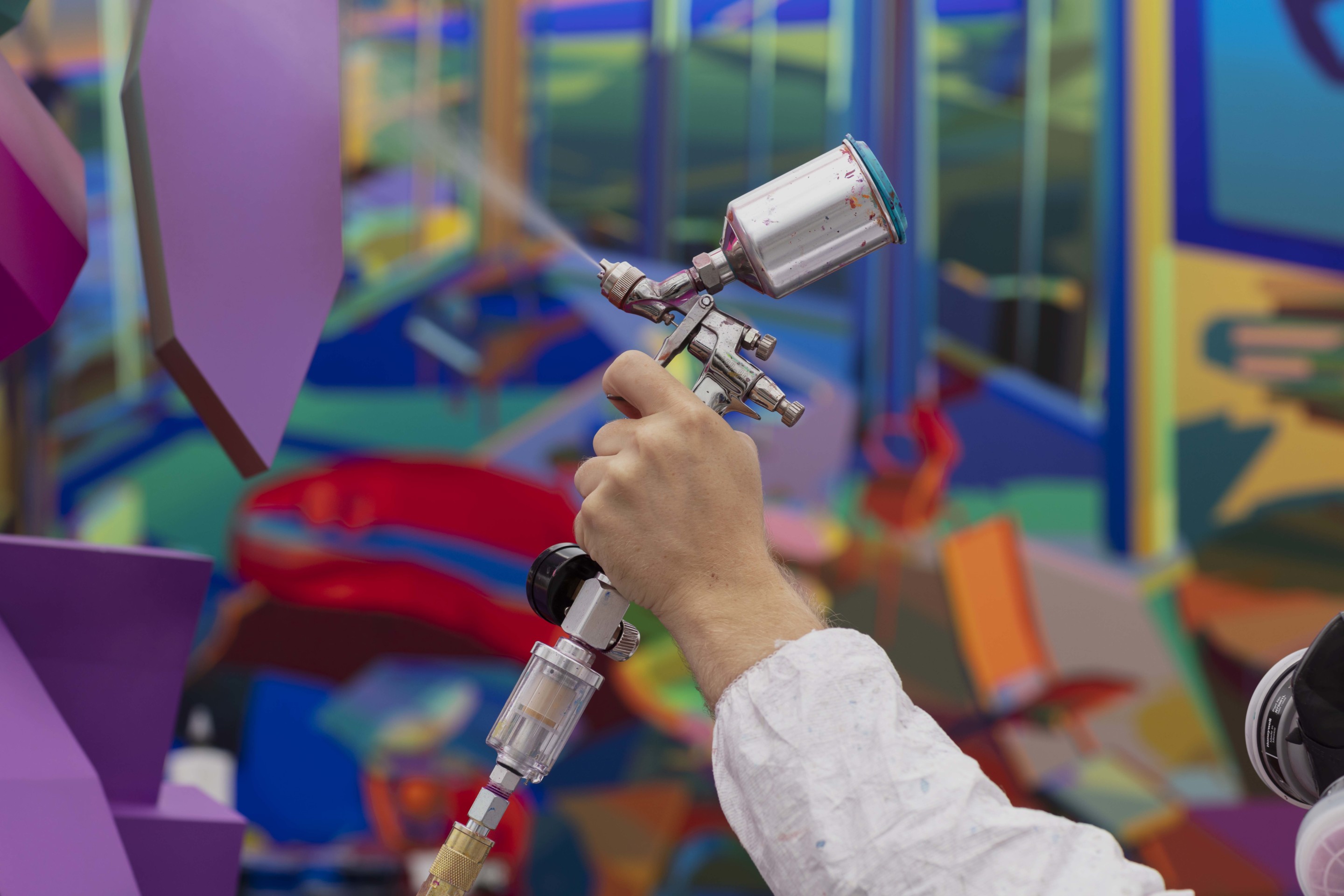
As mentioned by Chapline, Virtual Window, playful and slightly voyeuristic, doesn’t set out to recreate the W. Hawkins Ferry House in a manner that suggests a facsimile of the home at an exact moment of time. Chapline’s paintings aren’t replications or snapshots but composites that represent a 56-year-old art-filled residence in its rather groovy totality.
“With the opportunity to work on the Hawkins Ferry House project, several things came to the forefront,” said Chapline. “Staying true to the spirit and the design aesthetics of the home without being rigid in depicting a one to one representation of the home. Riding that line between depiction and invention allowed me to be open to exploring and understanding the design choices that were made but also how the house ultimately has been lived in and the experiences that have existed within it.”
Although Virtual Window differs from past works by Chapline in that his paintings of the Hawkins Ferry House capture the spirt of a very real place, his previous paintings of interior spaces do also evoke a very specific era and capture a tangible mid-century, space-age spirit.

“Growing up in American suburbia, I have always had a familiarity with mid-century homes. I am fascinated in how these aesthetics are then passed down and re-appropriated,” explained Chapline. “Not just within my own personal experience but through vintage magazines, film, and other cultural byproducts. I think by carrying on these themes and concepts, I am not only just appropriating aesthetics but actually able to talk about larger social concepts.”
One of the hallmarks of the Hawkins Ferry House over the years has been, as mentioned, the bounteous art on full display both inside the residence and through its oversized windows. This is a tradition carried on by present-day occupants, JJ and Anthony Curis. As noted in a press statement: “The couple has amassed their own impressive collection of contemporary art in present day, and hope that Ferry would have felt their patronage of the arts and commission of Chapline’s works was in line with his own legacy.” (During earlier, non-pandemic times, the couple has staged group shows in the landmark home.)
In Virtual Window, much of Ferry’s collection is represented although other elements are of Chapline’s own creation.
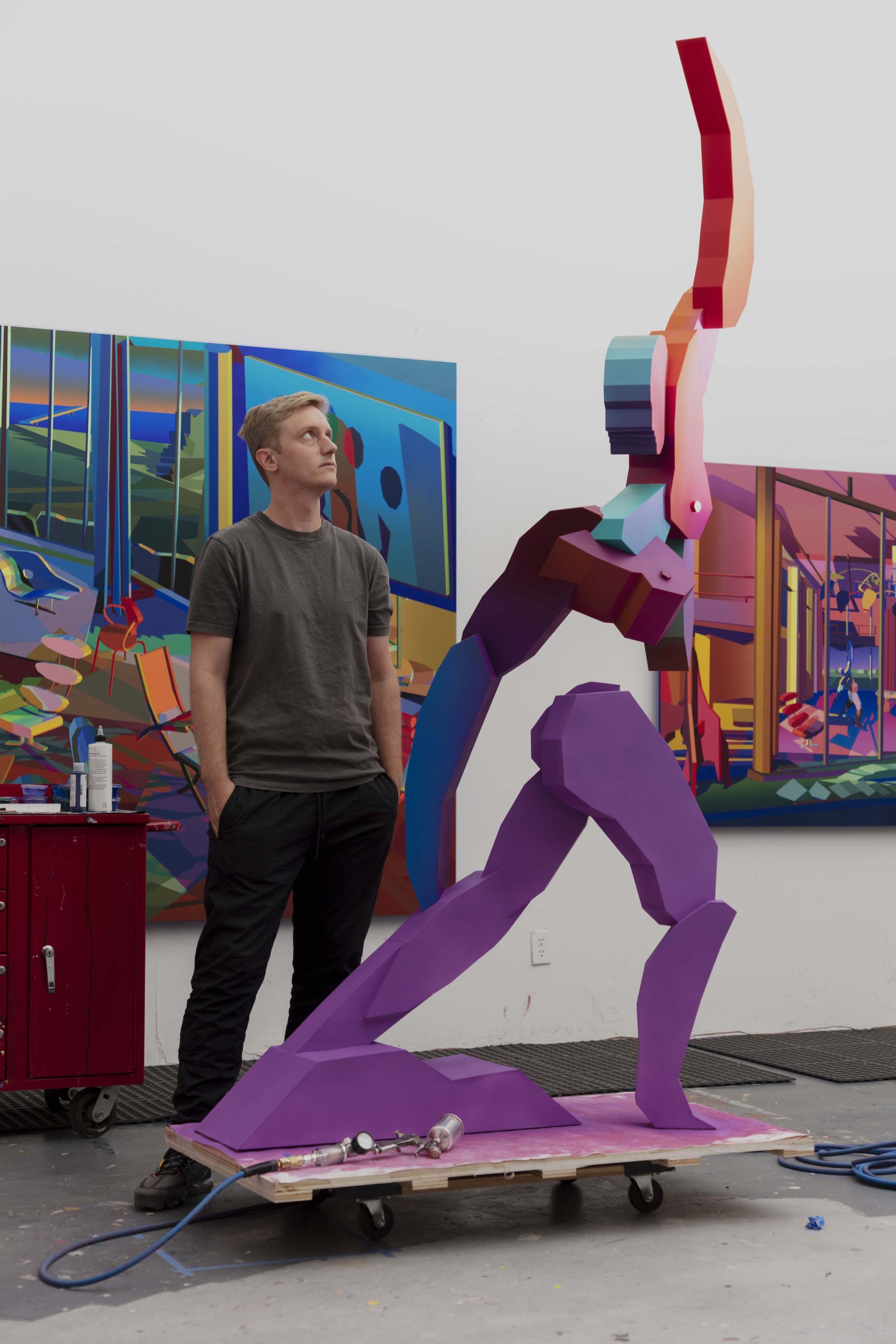
“One of the pieces that struck me was how the Giacometti sculpture with its elongated form, completely filled the space and accentuated the double-height scale of the living space,” he said. “I’ve also incorporated a Calder mobile, a painting by Adolph Gottlieb, a sculpture by Henry Moore with furniture pieces like a Cherner chair and a Noguchi table. Alongside these identifiable elements, I try to create my own version of the furniture, sculptures and painting from references and collages, appropriating aesthetic decisions while trying not to capture the objects exactly.”
Much of Ferry’s home-populating art collection, which, in addition to Alberto Giacometti, included works by Joan Miró, Richard Serra, Max Ernst, Franz Kline, Mark Rothko, Clyfford Still, Picasso, Robert Rauschenberg, Ellsworth Kelly, Barnett Newman, and Robert Motherwell, was donated to the Detroit Institute of Arts by the time of his death.
While Virtual Window, which includes four large paintings, a diptych portraying elongated arched windows, and a sculpture inspired by Giacometti’s Standing Woman, has been (non-virtually) installed at the Hawkins Ferry House, the exhibition is publicly available to view online at the Library Street Collective website.






